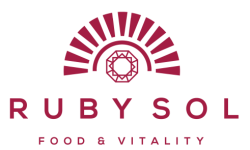In order to achieve any fitness goal (weight loss, strength gains, increase energy, etc.), the best place to start is with a clear plan of action that can be executed consistently.
This doesn’t mean you should be doing the same exact workout, reps, and weights every single time you train. In fact, please don’t do this – because that won’t get you results either! The body needs constant challenge and variability in order to both maintain and progress to the next level. Think of variability as iterations of your workout program. A few tweaks and progressions are gradually implemented, but the fundamental moves remain intact.
Once you have a well-balanced foundational workout plan, let the fun begin! You can transform each of your main moves (squat, deadlift, horizontal push and pull) using these 4 strategies to help you continue to add new dynamics and intensity to your routine.
Those elastic rubber bands may look innocent from afar, but don’t let them fool you. Most people associate resistance bands only with rehabilitation or therapy work. And while they are extremely helpful for recovery work, they can be just as much of an asset to your strength training routine. Adding a mini band above your knees or a resistance band to your free weight exercises heightens your body’s proprioception, or awareness in space, guiding you to notice the details of your movement. They help the targeted muscles to engage at a higher capacity, enhancing overall performance. You’ll feel the burn in no time.
Bicep curls and the leg extension machine are simple enough, but what most people don’t realize is that these exercises were specifically designed for body building training. So, unless you’re planning to step on stage soon and compete, it’s recommended these more rigid and stationary movements are a complement to your training, rather than the foundation. Most people train in only one direction, completely neglecting the other two. Work on performing your exercises moving to left and right and adding in some rotation. Not only will the same exercise feel significantly more challenging, you’ll also do your joints, core, and spine a favor as you learn how to strengthen and stabilize.
A bit more obvious with this one, but people still forget about progressive overload. This is why intentionally choosing your rep scheme is important in order to achieve a goal. If you’re looking to burn fat, try dividing your training days into varying loads. One lighter day, another medium day, and one heavy day. The increase in load puts your body at a higher level of stress, helping to recruit more muscle fibers, and accelerating that after burn effect we all love so much.
This might not be the most pleasant sensation, but boy is this strategy powerful! The timing of how fast or slow you perform any exercise can influence the type of result you want. For example, for athletes who need more agility training, they will practice short bursts of exercises as fast as possible. On the other hand, someone working to add size to their glutes will want to do some heavy hip bridges as slow and controlled as possible to ensure the muscles are fully fatigued and maxed out.
There you have it! Using these strategies will not only actively work again that dreaded plateau effect, but it also keeps you motivated to push yourself and generate momentum in your routine. I hope this sparked some inspiration to get after it and start planning your next program!
How can you take what you’re already doing and crank it up to the next level? Let me know in the comments below how you’re varying your exercises. I can’t wait to hear about all your gains both in and out of the gym!

